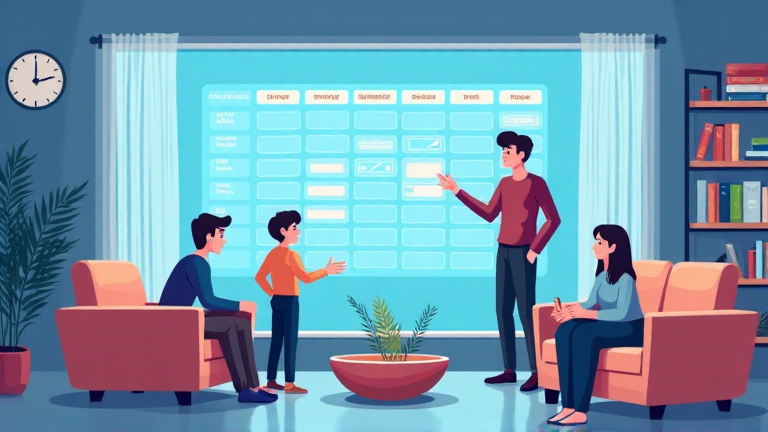
Embrace AI to Reclaim Time and Boost Productivity
In the relentless march towards efficiency, harnessing the power of artificial intelligence (AI) can revolutionize how various tasks at home are managed. While AI may not be adept at folding clothes, it excels at streamlining mundane yet essential household activities.
The Value of Micro Savings
Time bears more value than any coin, and channeling productivity beyond the workplace into everyday life can yield significant leisure dividends. Slice minutes off tasks like cleaning or planning, and these cumulative savings craft the luxury of more cherished, free moments.
Artificial Intelligence offers multiple avenues for optimizing everyday chores—be it cleaning, preparing meals, working out, shopping, scheduling, traveling, or managing life admin. Zero in on those tasks you tend to delay; this is where AI can significantly reduce the burden.
Leveraging AI: An Experiment with ChatGPT
Among the pantheon of AI tools, ChatGPT emerges as a powerful ally in the quest for efficiency. Despite launching in 2022, it has evolved into a sophisticated assistant capable of catalyzing time management. While a premium subscription exists, the complimentary version often suffices for most needs.
Analyze Your Weekly Patterns
Instead of focusing solely on AI’s prowess in generating humorous skits, tap into its potential to alleviate personal bottlenecks. Reflect on areas where time eludes you and deploy AI as a tactical tool to forge quicker and smarter pathways.
- Struggling with meal prep? Enlist ChatGPT as a sous-chef.
- Want to get kids off screens? Have ChatGPT create engaging trivia.
- Unsure of what to wear? Let AI assist in planning outfits based on your wardrobe.
Target these efforts towards two to three key tasks to begin with.
Unveil the Time Thieves: Two Case Studies
1. Organizing Chores with AI
Imagine a personalized family chore system, organized just for you with ChatGPT. This AI tool can devise a chart fitting your family dynamics—a perfect blend of age-appropriate chores for kids, wrapped within a rewards framework.
Example: A Family of Four - Mum, dad, a 6-year-old boy, and a 3-year-old girl.
Prompt: "Generate a family chore chart that includes tasks with estimated completion times and a points-based reward system."
AI might suggest adding tasks like watering plants, reinforcing your current task list. You can adjust the task list, require certain tasks to be daily, and rotate parental responsibilities.
ChatGPT even allows your kids to earn bonus points by assisting with parent chores, adding a playful competition element and easing parental workload. Transform the AI plan into a printable chart to visually track and motivate participation.
2. Converting Handwritten Notes
Accelerate note management by letting AI transcribe handwritten meeting notes into text. With the ChatGPT app, snapping photos of notes simplifies the digitization process.
Prompt: "Transcribe these handwritten notes into text."
By cross-referencing with physical notes, enhance correctness with tweaks if AI misinterprets your handwriting. While small, automating these tasks soon accumulates noticeable time savings.
Conclusion
The integration of AI into everyday tasks is more than mere novelty—it represents a critical way to unlock precious time. As AI continues to evolve, its ability to amplify daily productivity underscores the necessity of embracing such advancements. Whether for laundry lists or digital conversion, AI proves an invaluable instrument in redefining efficiency.
Note: This publication was rewritten using AI. The content was based on the original source linked above.